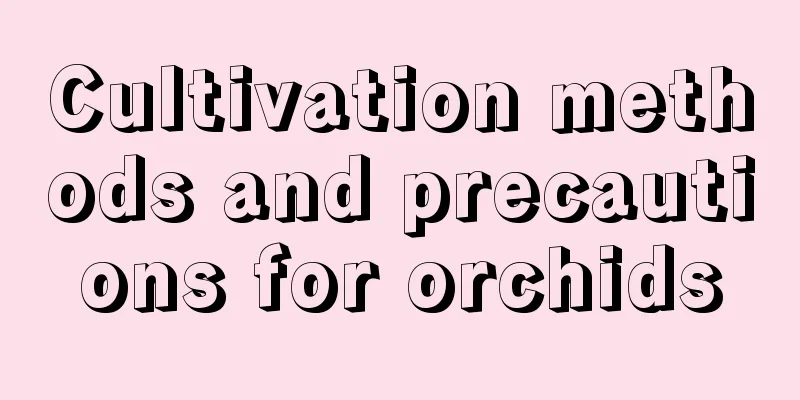How to grow pumpkin to get high yield?

|
Pumpkin is loved by people for its rich nutritional value and high yield, and is often planted in fields or in front of and behind houses. However, many growers face the problem of few melons or only growing vines but no melons, which seriously affects the yield. The key to increasing pumpkin fruit set is to understand its growing needs. So how can we grow pumpkins to achieve high yields? 1. Control the excessive growth of pumpkin In the process of pumpkin planting , it is common to encounter the problem that the plants grow vigorously but do not produce pumpkins or produce few pumpkins. This is usually because the plant's vegetative growth is too vigorous, which inhibits its reproductive growth. Excessive growth not only leads to the "mad seedling" phenomenon, affecting yield, but may also increase the risk of diseases and pests due to field congestion. Causes of excessive pumpkin growth include excessive soil moisture, insufficient light and excessive nitrogen fertilizer. Although nitrogen fertilizer can promote the growth of stems and leaves, excessive application will cause the plant to grow too vigorously. It is particularly important to note that chicken manure and cake fertilizer have high nitrogen content. Improper use can easily cause excessive growth, and insufficiently decomposed chicken manure may cause root burn and pests and diseases. If the pumpkin plants have already started to grow vigorously, you can take the following measures: 1. Pinching the tips, lifting the vines, and twisting the vines: Inhibit vegetative growth and promote reproductive growth by topping, pinching, destroying aerial roots, and twisting the vines. 2. Spray chemical growth control agents, such as paclobutrazol or chlormequat, to inhibit stem elongation and promote plant growth. 3. Use bamboo sticks to control growth: Insert bamboo sticks at the top of the pumpkin to hinder nutrient transport and promote the conversion of nutrients to reproductive growth. 2. Reasonable density planting Planting too densely will cause the pumpkins to molten, affect ventilation and light transmission, and increase the risk of falling flowers and pumpkins. It is recommended to adopt ridge planting, control the distance between ridges and holes, and plant 300 to 500 plants per mu. When transplanting seedlings, they should be planted after the seedlings have grown 3 to 5 true leaves. 3. Strengthen water and fertilizer management Pumpkin has a long growth cycle, and reasonable fertilization and watering have a significant impact on yield. The base fertilizer is mainly decomposed farmyard manure and triple compound fertilizer , and the topdressing is applied in appropriate amounts according to the growth of the plants. After flowering and fruiting, focus on applying phosphorus and potassium fertilizers to promote fruit enlargement. Watering should keep the soil moist and avoid being too wet or too dry. 4. Topping and leaf picking By topping, pinching and removing excess male flowers, we can promote the formation of fruits on side branches, improve ventilation and light transmission, and reduce the phenomenon of fruit rot. 5. Artificial pollination Pumpkins are monoecious, and natural pollination is easily affected by weather. Artificial pollination can increase the fruit setting rate, especially in rainy weather. The best time for pollination is between 7 and 9 am. The above are the key points for high-yield pumpkin cultivation. Mastering these key techniques can effectively improve the yield and quality of pumpkin.
|
<<: How to grow sweet potatoes to get high yield?
>>: Freshwater shrimp farming methods and techniques
Recommend
How to care for hydrangeas by repotting them in summer?
Hydrangea , scientifically known as Hydrangea mac...
How to grow more and bigger tomatoes on the balcony (how to grow dwarf tomatoes on the balcony)
The most popular vegetables to grow on the balcon...
How to pinch the rubber tree
1. Principle: In order to make its side branches ...
What to do if the leaves of Vinca rosea turn yellow
Soil is alkaline Catharanthus roseus does not hav...
In which province are lychees mainly produced? What happens if you eat too much?
1. Which province is the main lychee producing ar...
Three Don'ts When Placing a Fortune Tree in Feng Shui
1. Don’t put it in the aisle The Feng Shui meanin...
How to grow green peony flowers
Green peony flower shape The green peony is a dec...
Can the Guanyin Lotus be repotted in summer? How to repot and water it and what to pay attention to
Can the Guanyin Lotus be repotted in summer? The ...
How to grow succulents for beginners in summer
1. Shade The light in summer is very strong, espe...
Can hosta be grown indoors?
1. Is it possible? The plant Hosta can tolerate p...
Characteristics of pomegranate flowers
1. Appearance characteristics 1. The plant usuall...
What vegetables are best to grow in February?
It is currently mid-February, and although temper...
Impatiens flower maintenance
1. Flowering period Since Impatiens can be sown f...
Can vinegar water be used to water flowers? The correct way to water flowers
Can vinegar water be used to water flowers? Vineg...
How often should figs be watered? Watering tips in spring, summer, autumn and winter
How often should you water your figs? Figs like m...









